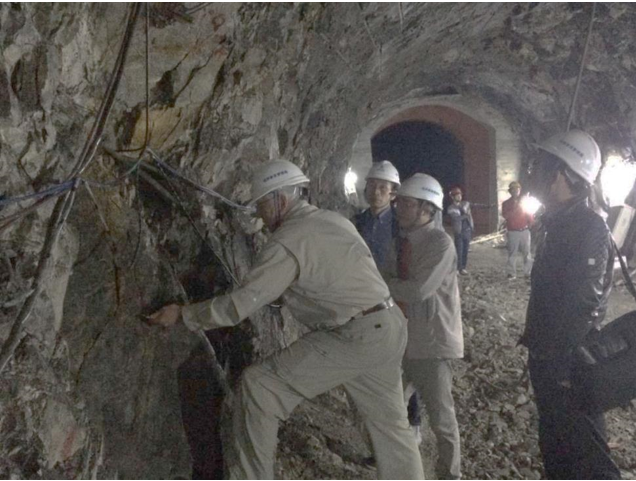

Over the last decade or more, I had the pleasure to participate in many events of the Chinese Academy of Sciences (CAS), such as conferences, workshops, site visits and engineering forums. One of them, a joint meeting with the International Society of Rock Mechanics (ISRM), offered an international team of experts to explore opportunities to master rockburst challenges during deep tunneling at the Jinping-II hydropower development project in Sichuan province of China.
Years later, the main hydropower tunnels now convey water to produce electric power and the drainage and access tunnels have provided an opportunity to establish the China Jinping Underground Laboratory (CJPL) at some 2400 m depth. The cosmic ray rate in this location is under 0.2 muons/m2/day and thus is highly suitable for state-of-the-art dark matter physics research. The construction of a first chamber was completed in 2010 and four other chambers are now excavated and ready for completion and experiment installation.
Dealing with rockbursts has always been a very challenging topic from scientific and engineering perspectives as productivity and safety matters are at play. Rockbursts are small earthquakes that cause damage to underground excavations. These earthquake-like tremors are created by mining during the extraction of ore or by advancing civil tunnels in brittle rock under high stress. I was fortunate to join the Canadian Rockburst Research Program in the late 1980s and eventually co-authored the Canadian Rockburst Support Handbook (1996). Rockbursting problems are experienced world-wide and the research is on-going on all continents with centers of excellence in Australia, Canada, China, Russia, South Africa and South America.
When Professor Feng Xiating offered to nominate me for the CAS President’s International Fellowship for Distinguished Scientists, I was both honored and happy to accept the opportunity to come back and intensify the research collaboration with a research group that is at the forefront of rockburst research in China. Prof. Feng’s group is working on all fronts, in the field, the laboratory and using numerical modeling. The research team of Prof. Feng has published widely and has made great contributions by releasing valuable data and information for our collaboration. Dr. Cai Ming from Laurentian University was also able to join this research collaboration due to the generous support from the State Key Laboratory of Geomechanics and Geotechnical Engineering, Institute of Rock and Soil Mechanics (IRSM), and the Chinese Academy of Sciences (CAS).
The visit started in October 2016 with lectures and research discussions at the IRSM in Wuhan. This was followed by a trip via Chengdu to Xichang to visit the Jinping-II underground research laboratories. After the visit, we held intensive work sessions on data analysis and interpretation back at the IRSM. I wish to take the opportunity to thank Prof. Li Shaojun for accompanying us to Jinping-II and his detailed introduction to innovative stress and deformation measurement techniques. I was also fascinated to learn of the work of Dr. Pan Pengzhi on cellular automation modeling, Dr. Jiang Quan on rock damage and spalling, and Dr. Qiu Shili who focused on geological and microseismic models.
At the end of the intensive work program, I was able to leave three technical reports with Dr. Feng. These reports summarized interpretations and suggestions for further research by his team and for research collaboration. A collaboration review meeting is planned for this May in Sudbury Canada during a mine seismology seminar organized by the Institute for Mine Seismology (IMS) from Hobart Australia.
Finally, I am grateful to Professor Feng Xiating for nominating me and extremely honored by the decision of the CAS PIFI Select Committee to offer me the CAS 2016 President’s International Fellowship for Distinguished Scientists. It has been a great privilege for me to be invited to collaborate with Professor Feng Xiating and his excellent team at the CAS.
Awarding of honorary certificate by Prof. Feng Xiating (Image from the Institute of Rock and Soil Mechanics, CAS)

Field investigation at Jinping Underground Laboratory (Image from the Institute of Rock and Soil Mechanics, CAS)